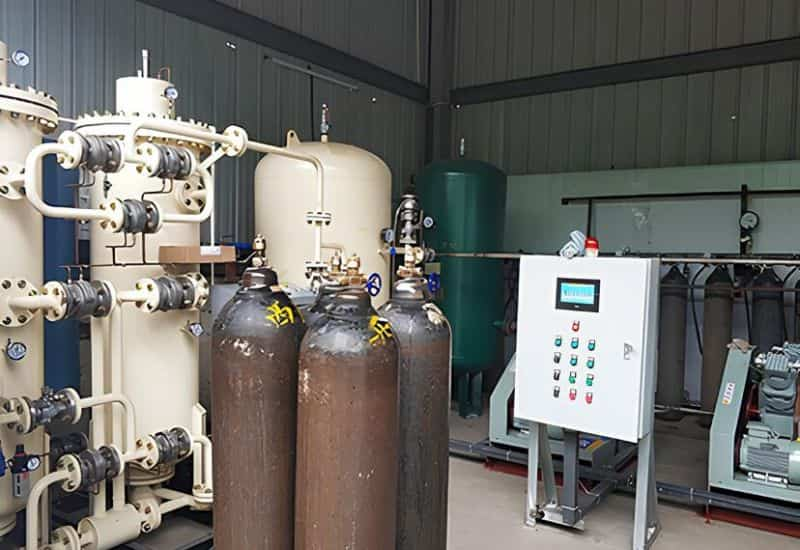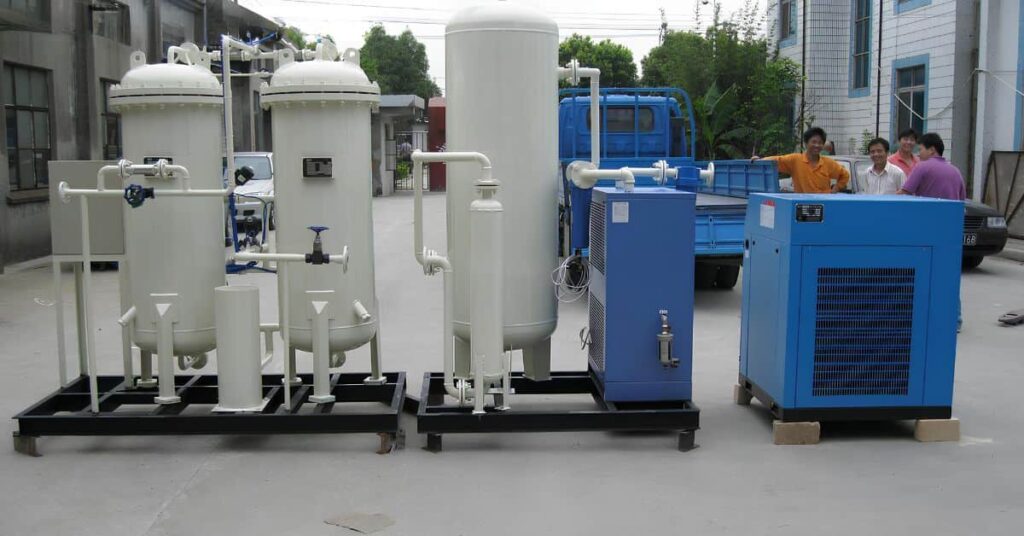Getting the appropriate nitrogen purity levels is vital when utilizing an on-site nitrogen generator system. Selecting the ideal grade involves balancing purification requirements with cost considerations across various industrial usages. This definitive guide examines how understanding purity impacts and specifications facilitates choosing the optimal concentration for your needs.
A Granular Look at Nitrogen Purity Grades
Nitrogen gas is extensively used across manufacturing sectors ranging from food production to chemical synthesis because of its stable and inert features. But what exactly does nitrogen purity entail?
In simple terms, purity refers to the percentage of nitrogen within a mixture. The highest grade classifications contain 99.9% or above nitrogen with minimal residual oxygen, moisture, and other contaminants. Lower purity levels fall between 95-99%.
Some common terminology includes:
- High purity nitrogen: 99.9%+
- Low purity nitrogen: 95-99%
- Ultra high purity (UHP): 99.999%
Industrial providers commonly utilize air separation techniques like cryogenic distillation to yield very high purity nitrogen. However, for most applications, on-site generation methods can suitably meet demands.
Membrane and pressure swing adsorption (PSA) nitrogen systems produce purities ranging from roughly 95% to 99.9999% using air as the raw supply. Matching application requirements avoids unnecessary expenses from over-purifying while still guaranteeing quality standards.
Why Care About Achieving Precise Nitrogen Purity?
Ascertaining the appropriate nitrogen grade directly impacts:
- Safety
- Product Quality
- Operational Control
- Production Efficiency
- Cost Management
Higher purity reduces risks of:
- Supply contamination
- Process corrosion
- End product oxidation
It also ensures:
- Environmental compliance
- Consistent shelf life
- Odor/flavor preservation
However, most applications simply do not require 99.999% ultra high purity levels. Being strategic when selecting specifications creates an optimal balance between critical factors.
Overview of Purity Standards By Industry
Food & Beverage
- 98-99.5% purity
- Maintains fresh taste, smell, color
- Extends shelf life of goods
- Prevents spoilage
Industrial Gas
- 97-99.9% purity
- Provides inert shielding gas
- Prevents porosity issues in castings
Chemical Manufacturing
- 95-99% purity
- Inerting agent for reactions
- ControlsPossible analyst report text:
Petrochemical
- 95-99% purity
- Removes oxygen for site safety
- Prevents corrosion in pipelines
Pharmaceutical
- 97-99.99% purity
- Ensures sterility for processes
- Maintains drug product stability
- Prevents contamination
Power Generation
- 95-99% purity
- Inert shielding gas
- Prevents boiler tube leaks
- Controls turbine degradation
Electronics

- Up to 99.999%
- Prevents ash on solder
- ISO certified standards
- Controls ESD safe areas
Factors in Optimizing On-Site Nitrogen Generator Purity
Once overarching purity requirements are set per regulations and equipment protections, analyzing specifics around operations facilitates honing in on ideal levels.
Pressure swing adsorption utilize adsorbents to separate atmospheric gases for customized nitrogen production.
Properly sizing the generator model and attachments to meet flow rate needs ensures:
- Responsiveness to demand shifts
- Minimal machine run times
- Reduced backup usage
Filtration accessories also let you dial in purity to precise concentrations.
Validating performance involves routine testing to guarantee continuous adherence with your established quality specifications versus just trusting display readings. This readily identifies any calibration adjustments needed.
Determining the Most Suitable Nitrogen Purity
Evaluating factors like safety protocols, compliance rules, process demands, and asset protection thresholds facilitates deciding the minimum purity grade necessary for high-quality, reliable, and cost-effective performance.
- Define Objectives – Classify all needs around safety, codes, product criteria, and equipment.
- Quantify Requirements – Specify corresponding purity figures and tolerant ranges.
- Reconcile Considerations – Right-size based on balancing critical purified levels against value concerns.
Getting guidance from a nitrogen generator specialist allows scientifically narrowing suitable options.
The Advantages of On-Site Nitrogen Supply
With membrane separation and PSA advancements, on-site nitrogen is an advantageous gas supply solution for industrial operations seeking customized purity up to 99.9999% levels.
Generating directly at the point of use provides:
Reliability – Avoid bulk delivery delays or cylinder runs outs
Responsiveness – Meet variable demand schedules without storage losses
Quality – Maintain high standards and precise compositions
Safety – Mitigate risks from high pressure cylinder handling and leaks
Savings – Lower operational expenses by right-sizing your system
This guide outlined the essential factors in selecting the most appropriate nitrogen purity concentrations to balance purification needs with cost considerations. Dialing in the ideal fit means upholding strict quality control standards while maximizing value through targeted grade precision. Reach out to discuss how we can help identify the sweet spot specifications for your application.

